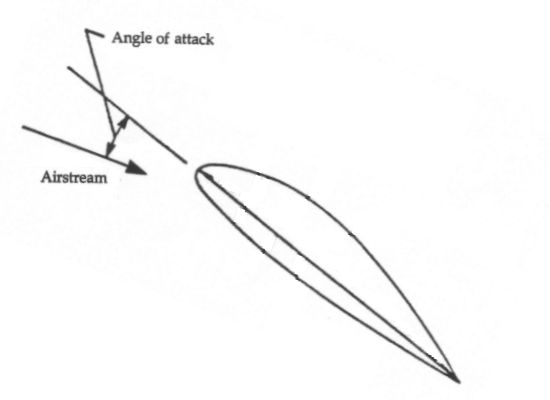The Angle of Attack
The angle of attack (AoA) is yet another critical part of flight and lift creation, every pilot knows and is acutely aware of the angle of attack whilst they are flying, some aircraft even have an angle of attack meter to display the accurately measured AoA. The AoA is measured as the angle between the direction of airflow and the chord line of the aerofoil, the AoA in normal flight is usually between 2 and 8 degrees. The AoA should not be confused with the angle of incidence, which is the angle measured between the chord line and a fixed datum point of the aircraft, usually its longitudinal axis.

As air flows over a wing, especially when the wing is straight and level, or the angle of attack is zero, air will flow over the wing smoothly, however as the angle of attack increases, in other words, the leading edge lifts higher than the trailing edge when measured against the airflow, the air travelling over the wing will still do its job, though there is a point where the boundary layer will separate. The boundary layer is the small thin layer of air travelling over the wing closest to the surface. As the AoA increases the boundary layer can no longer stay close to the surface and it separates from it. This boundary layer separation point will begin occurring nearer to the trailing edge, as the AoA increases the separation point will move forward. The problem then becomes that as the boundary layer separates it causes turbulence, and therefore reduces lift, to a point where the lift being created can no longer support the weight of the aircraft and the wing 'stalls' which means the aircraft will lose altitude, a stall usually occurs at an AoA of around 16 degrees.
There are so many other aspects to this, but i have kept it basic, with more in depth study to come, part of which is the effect the lift creation has on the wing. The created lift or low pressure zone over the wing has what is called the centre of pressure (CoP), the actual pressure distribution over and under a wing has the greatest at the leading edge, the point that is the resulting force from the pressure variation is called the centre of pressure and is usually found almost halfway back along the chord line. When the AoA increases the CoP normally moves forwards, to the point of nearing the stall where it drops dramatically backwards. There are many more issues pertaining to the AoA, this hopefully has given you a small taste of what it means and how it affects flight.
